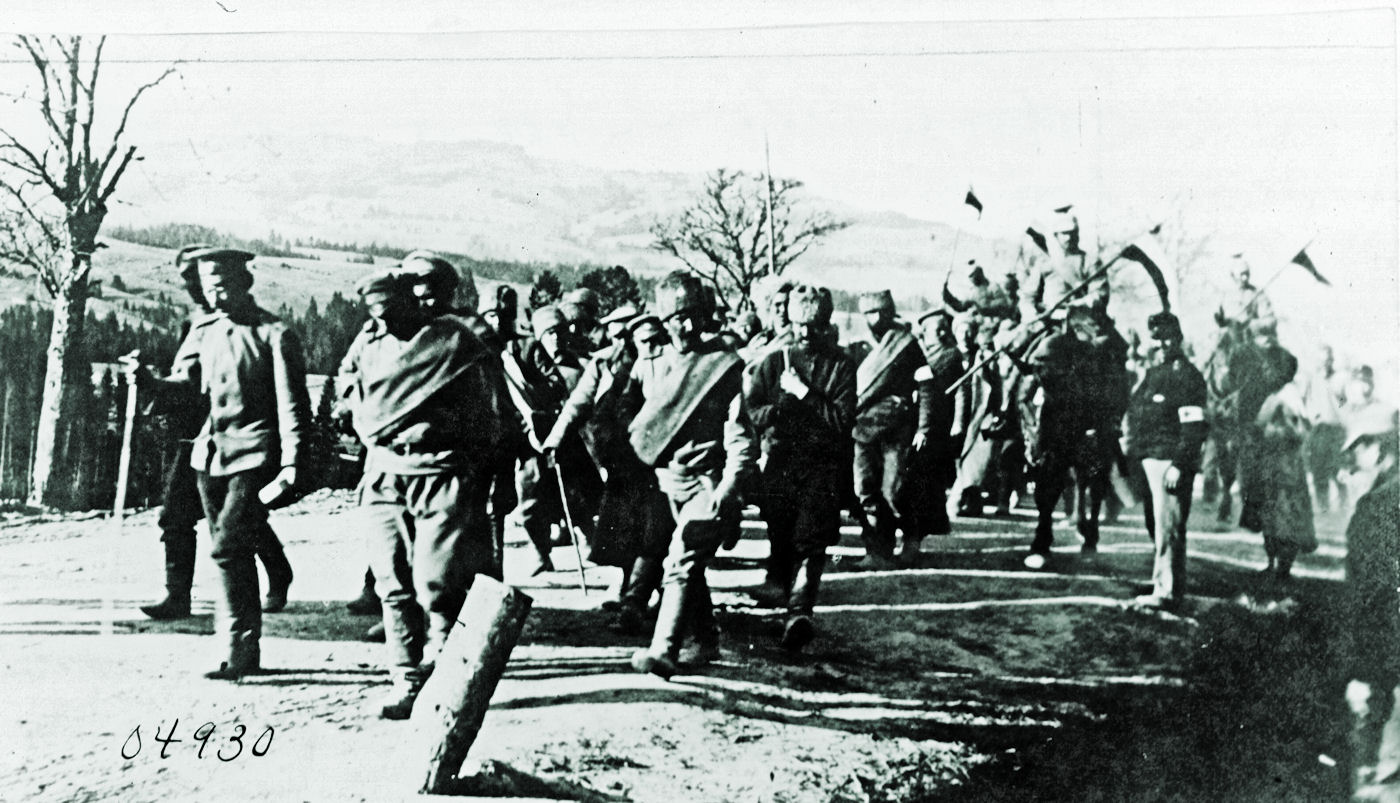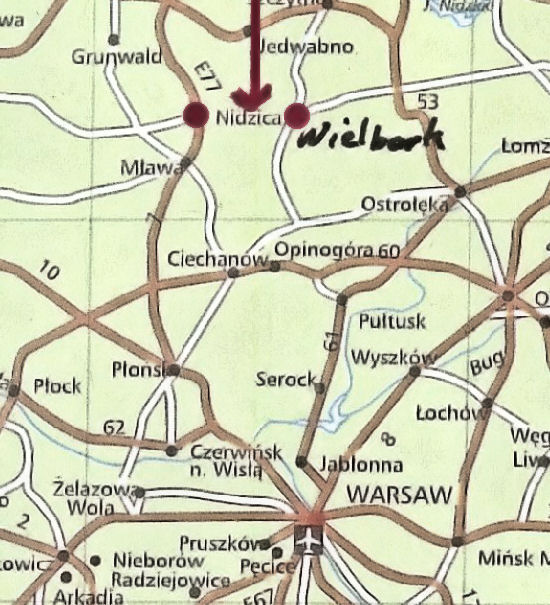Click on Image to Expand
Absent Polish Memorials: Tannenberg

Column of Russian Prisoners After the Battle
As I discussed in yesterday's Road to the Great War posting, I believe Poland should provide historical markers or monuments to identify the location of the battle of Tannenberg and to acknowledge its importance.
Ideally, Polish cultural and historical authorities would create a whole series of markers which would allow Poles and foreigners alike to trace the German and Russian movements in the battle. If, on the other hand, the various Polish governmental authorities have sufficient funds to provide a marker at only one site, I will propose three different potential locations.
My first suggested location for a monument would be along the main road between Neidenburg (now Nidzica) and Willenberg (now Wielbark).

Road Between Neidenburg (now Nidzica) and Willenberg (now Wielbark)

Ideally, Polish cultural and historical authorities would create a whole series of markers which would allow Poles and foreigners alike to trace the German and Russian movements in the battle. If, on the other hand, the various Polish governmental authorities have sufficient funds to provide a marker at only one site, I will propose three different potential locations.
My first suggested location for a monument would be along the main road between Neidenburg (now Nidzica) and Willenberg (now Wielbark).
Click on Image to Expand

Road Between Neidenburg (now Nidzica) and Willenberg (now Wielbark)
(Photo by REW)
Locator Map

The Germans dramatically defeated the Russians at Tannenberg because they were able to encircle the Tsar's forces as they attempted to retreat to the south. The trap was sprung by the German First Army Corps under General Francois as he moved between Neidenburg and Willenberg. In this photo of the rural area between the two towns, the Germans would have been coming from the west directly toward the viewer. The retreating Russians would have been to the right (north). Battle of Tannenberg, Map 7 at pages 96 and 97 in A Military Atlas of the First World War (1973) by Arthur Banks will help the reader visualize the scene.
Alternate locations for a monument could be at the memorial park for the 1410 battle of Tannenberg ("Tannenberg I") or the city park in Olsztynek (formerly Hohenstein) where the Tannenberg Memorial once stood. Both of these locations could be subject to objections.
The Tanneberg I site is where an alliance of Poles, Lithuanians, and Tartars, commanded by Polish King Wladyslaw Jagiello, defeated an army of German Teutonic Knights in the largest medieval battle in Europe. Poles might object to a Great War memorial here as diluting attention from what has traditionally been viewed as a great moment in their history. For many Poles, the World War I battle was conflict between foreigners. Besides, little actual fighting took place at this location during the World War I battle.
Strong objections might also be raised against the site where the German Tannenberg Monument once stood. Mainly this would be because of the Nazi association, although the monument was built between 1925 and 1927 — years before the Nazis came to power in 1933.
In our next articles in September we are going to examine the cases of the missing memorials for the Gorlice-Tarnow offensive, the Siege of Przemyśl and the actions at Limanowa and Lapanow.
REW
Alternate locations for a monument could be at the memorial park for the 1410 battle of Tannenberg ("Tannenberg I") or the city park in Olsztynek (formerly Hohenstein) where the Tannenberg Memorial once stood. Both of these locations could be subject to objections.
The Tanneberg I site is where an alliance of Poles, Lithuanians, and Tartars, commanded by Polish King Wladyslaw Jagiello, defeated an army of German Teutonic Knights in the largest medieval battle in Europe. Poles might object to a Great War memorial here as diluting attention from what has traditionally been viewed as a great moment in their history. For many Poles, the World War I battle was conflict between foreigners. Besides, little actual fighting took place at this location during the World War I battle.
Strong objections might also be raised against the site where the German Tannenberg Monument once stood. Mainly this would be because of the Nazi association, although the monument was built between 1925 and 1927 — years before the Nazis came to power in 1933.
In our next articles in September we are going to examine the cases of the missing memorials for the Gorlice-Tarnow offensive, the Siege of Przemyśl and the actions at Limanowa and Lapanow.
REW
| Two excellent introductions to the war on the Eastern Front. | Order Now |
Order Now |

No comments:
Post a Comment